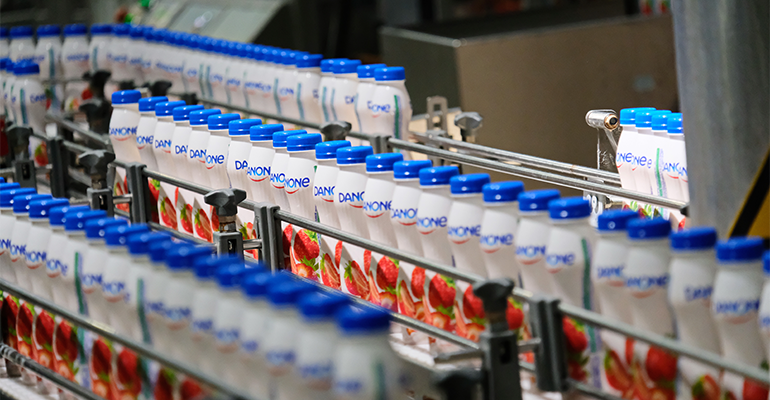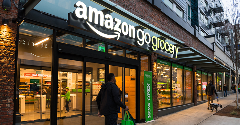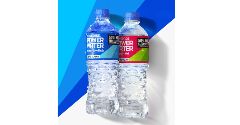News
Industry Interplay in Food Packaging
4 Nov 2014Sterilization, opening mechanisms, packaging for longer life, speed, hygiene, cost-effectiveness, reducing waste, ease of use…. packaging for solid product, for liquid product, for viscous product….into cups, bottles, trays…..packaging for market appeal, for ease of transport and storage….sustainability throughout the supply chain. All these things form part of today’s increasingly complex packaging mix. And because consumer […]

Sterilization, opening mechanisms, packaging for longer life, speed, hygiene, cost-effectiveness, reducing waste, ease of use…. packaging for solid product, for liquid product, for viscous product….into cups, bottles, trays…..packaging for market appeal, for ease of transport and storage….sustainability throughout the supply chain. All these things form part of today’s increasingly complex packaging mix. And because consumer preferences change, there is also an increasing demand for dynamism, to anticipate and respond to growing demands for convenience, efficiency, portability and, not least, novelty and differentiation. But many of these factors do not figure in the end consumer’s mind. In the so-called developed world, they are ‘givens’. And so they should be.
So what does today’s consumer care about? Here are a couple of issues:
Individuality and fashion
Let’s face it, food shopping is boring. Most packaging is boring. The drinks sector, a highly competitive market, has responded to the challenge of making product stand out with innovations such as limited edition bottles that offer uniqueness with eye-catching motifs and shapes. And the most innovative designs show a commensurate degree of success. But what about the food and beverage industry as a whole? How can packaging and fashion come together to create a pleasurable consumer experience?
Convenience and size
Larger packs may appear cheaper, but if you end up throwing most of the food away, it is a false economy. How big is your freezer? The latest report from WRAP, an organisation set up in 2000, estimates that UK households are still throwing away 4.2 million tonnes of household food and drink annually. That equates to six meals per household per week. More efficient packaging is one way to reduce food waste, and the SAVEFOOD initiative aims to create a dialogue between industry, research, politics and civil society to tackle the problem of spoilage, but we need to go further.
The problems for industry
Innovations and uniqueness cost money; and to remain competitive, packaging companies have to continually invest in a myriad of changing systems and processes to balance the delicate interplay of research and development versus cost and marketability. For example, any packaging company must deploy hi-tech IT systems. Au fait with cloud computing? If not, forget it. The challenge here is to find an inexpensive way of producing the right product in a timely fashion, taking into account all the factors listed above, while introducing innovative ideas that will appeal to the consumer. How to go about it?
Learning from others
We are increasingly moving away from the silo mentality where industry was frightened of dialogue lest it should reveal some trade secret that would compromise its competitive advantage. Now we have to go further. The packaging industry is already talking to other players within the food and beverage industry, to government, to associations and to consumers. The only way forward now is to widen the circle. What, for example, could the food packaging industry learn from fashion designers? Could Victoria Beckham give a few tips on the marketability of product? Sound crazy? Hmm. But you get my drift. There is no point in ‘reinventing the wheel’; let’s recognise the fact that all industries have common goals, and start to share more non-competitive information with each other. Let’s understand what other stakeholders in other industries have achieved, and learn to leverage its applicability to our own.
Related news

Oat Barista: Innovation for game-changing beverages
20 Nov 2025
Oat Barista is a clean label, sustainable, and innovative drink base specifically designed to create the perfect foam in one single ingredient.
Read more
How younger consumers are redefining ingredient choices and rejecting brand loyalty
18 Nov 2025
Gen Z and millennial consumers’ preferences for transparency, functionality, and purpose are “redefining the very nature of consumption itself”, says SPINS.
Read more
Hybrid formats and flexible positioning to disrupt category norms in 2026
17 Nov 2025
Trend forecasters expect food and drink to move more fluidly across occasions, functions, and formats as consumers seek versatility, novelty, and convenience.
Read more
Danone highlights digestive health as potential ‘tipping point’ for food industry
13 Nov 2025
Danone is betting on a food industry “tipping point” that will bloat the market for healthy products, particularly those related to gut health.
Read more
New UPF standard hoped to offer consumers ‘coherence and clarity’
10 Nov 2025
Ingredients companies are being urged to enter “a new era of partnership and innovation” following the launch of the industry’s first non-UPF verification scheme.
Read more
Faravelli at Fi Europe: Showcasing FARA® functional solutions for food and nutra
28 Oct 2025
At Fi Europe 2025 in Paris (stand 72M39), Faravelli showcases FARA® Customized Functional Solutions and a wide ingredient portfolio for food and nutra – delivering quality, innovation, and expertise.
Read more
Agrigum Redefined FIBER
27 Oct 2025
Agrigum has transformed gum acacia into a natural, science-backed fibre that supports gut health, sustainability, and innovation across global food and nutrition applications.
Read more
Expanding boundaries in food & beverage innovation
23 Oct 2025
IMCD and FrieslandCampina Professional expand partnership to deliver Kievit® across EMEA, enabling brands to enhance quality and accelerate time-to-market for tomorrow’s food & beverage creations.
Read more
Amazon Grocery launch aims to balance quality with affordability
22 Oct 2025
Global e-commerce giant Amazon has introduced a new private-label food brand, combining existing Amazon Fresh and Happy Belly products with new everyday items.
Read more
Powerade enters hydration space with launch of Power Water
21 Oct 2025
Coca-Cola’s Powerade brand has launched a zero-sugar, electrolyte-enhanced functional water, marking the brand's entry into the hydration space.
Read more